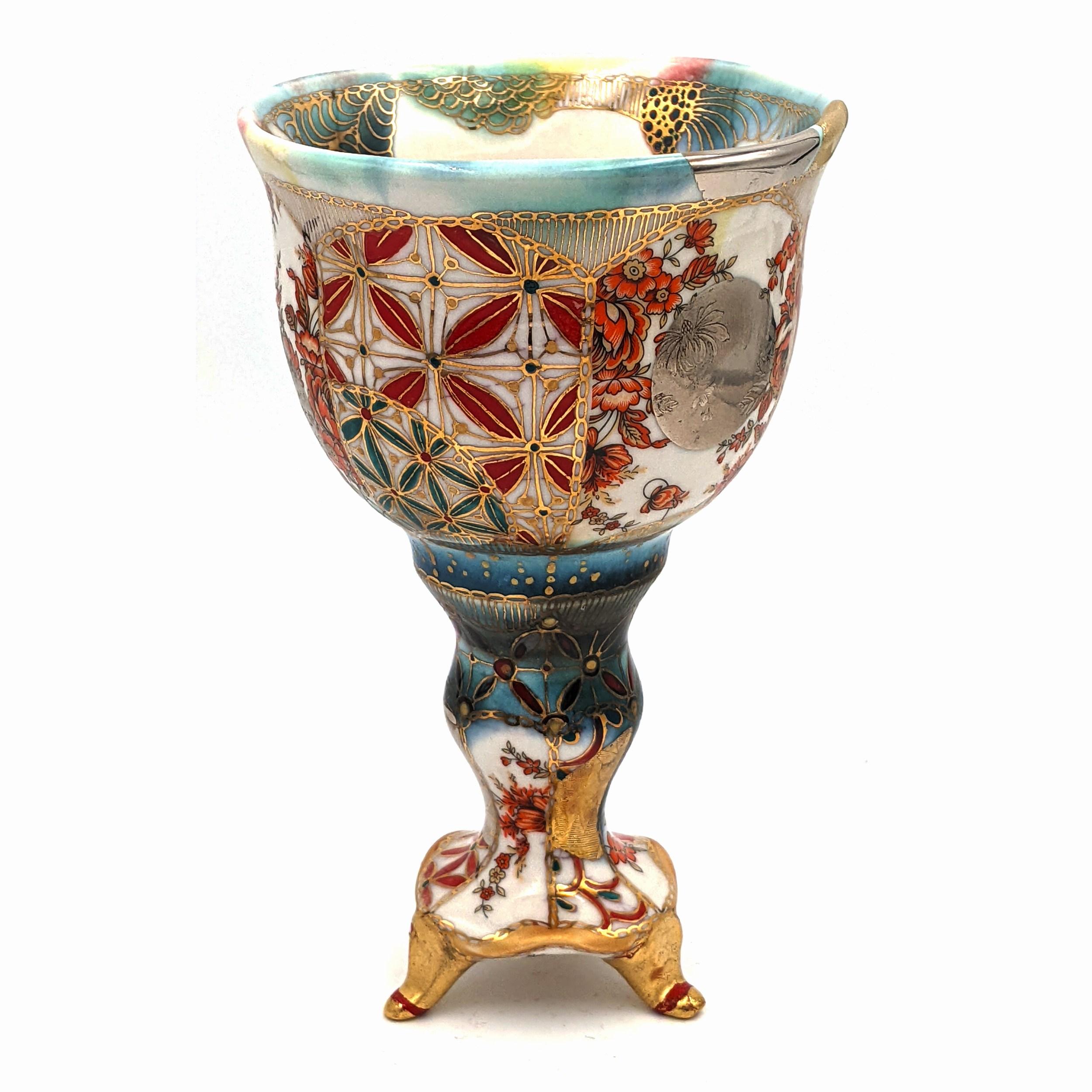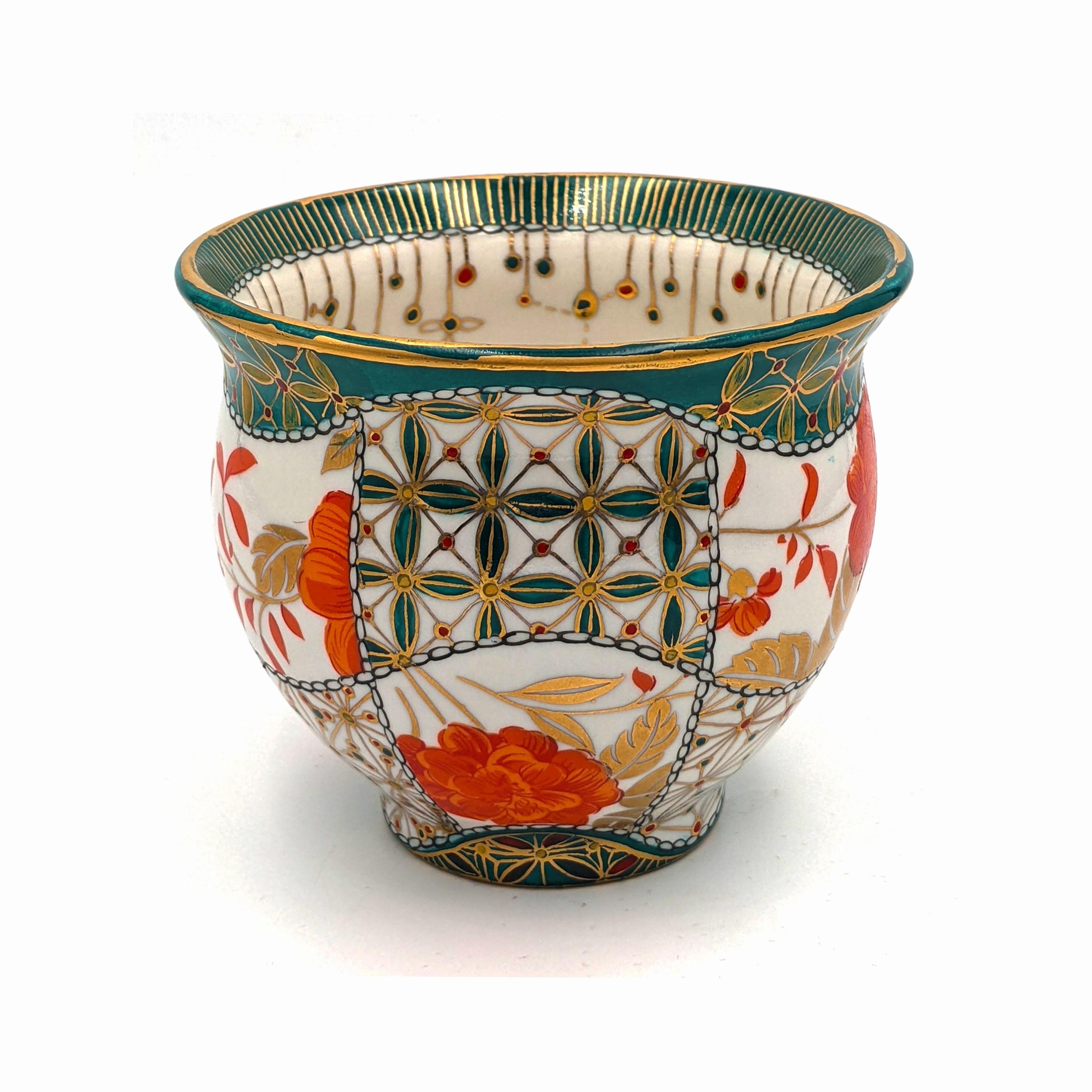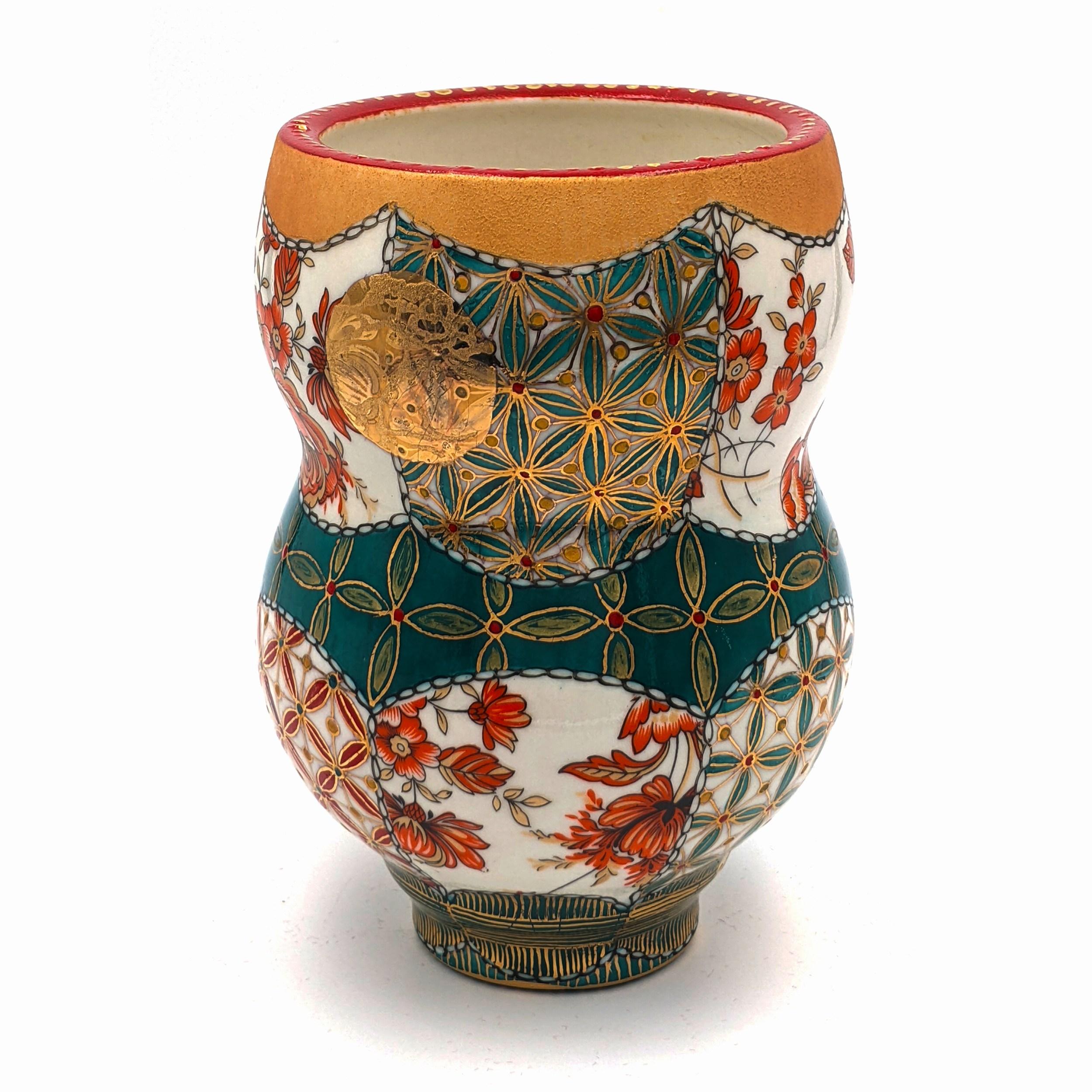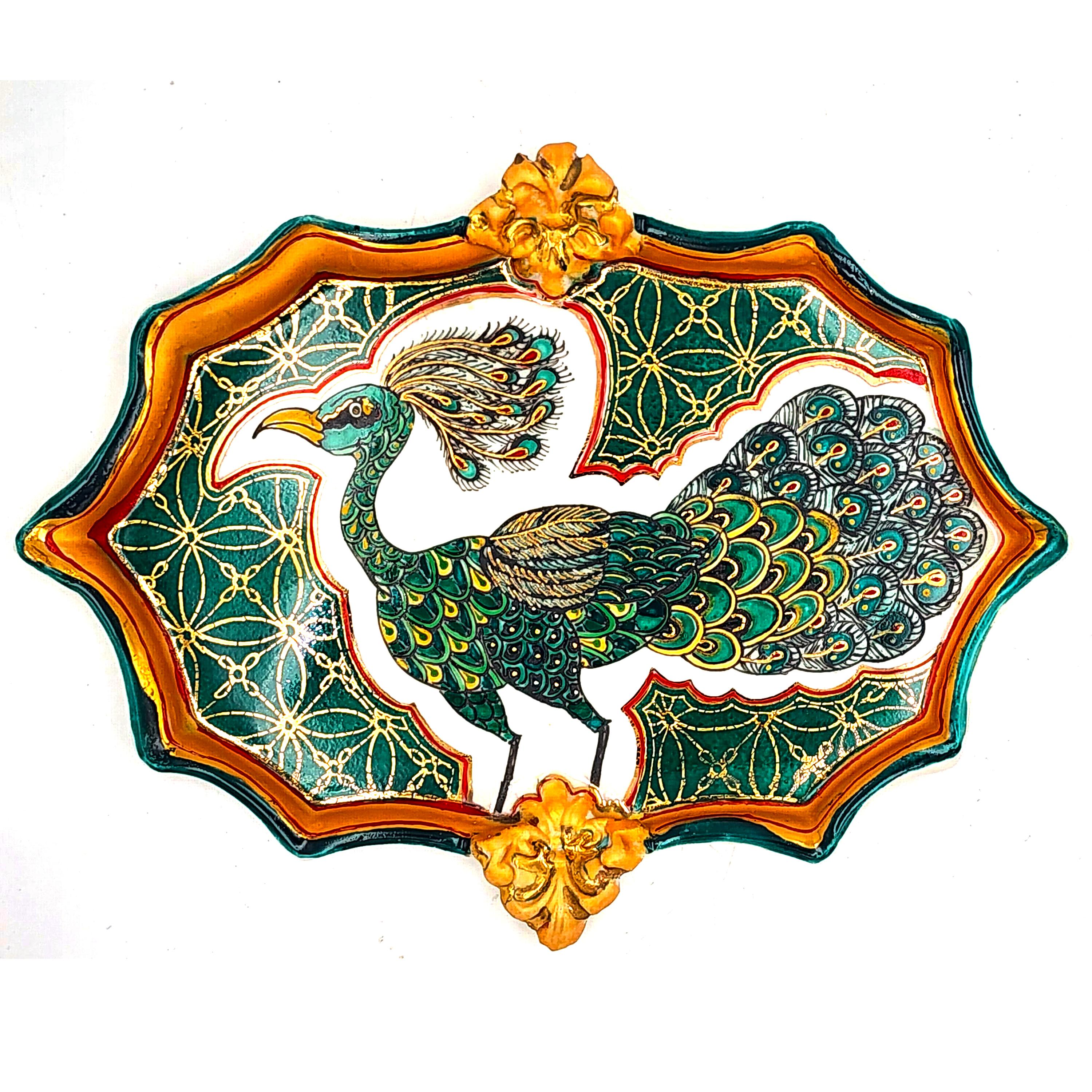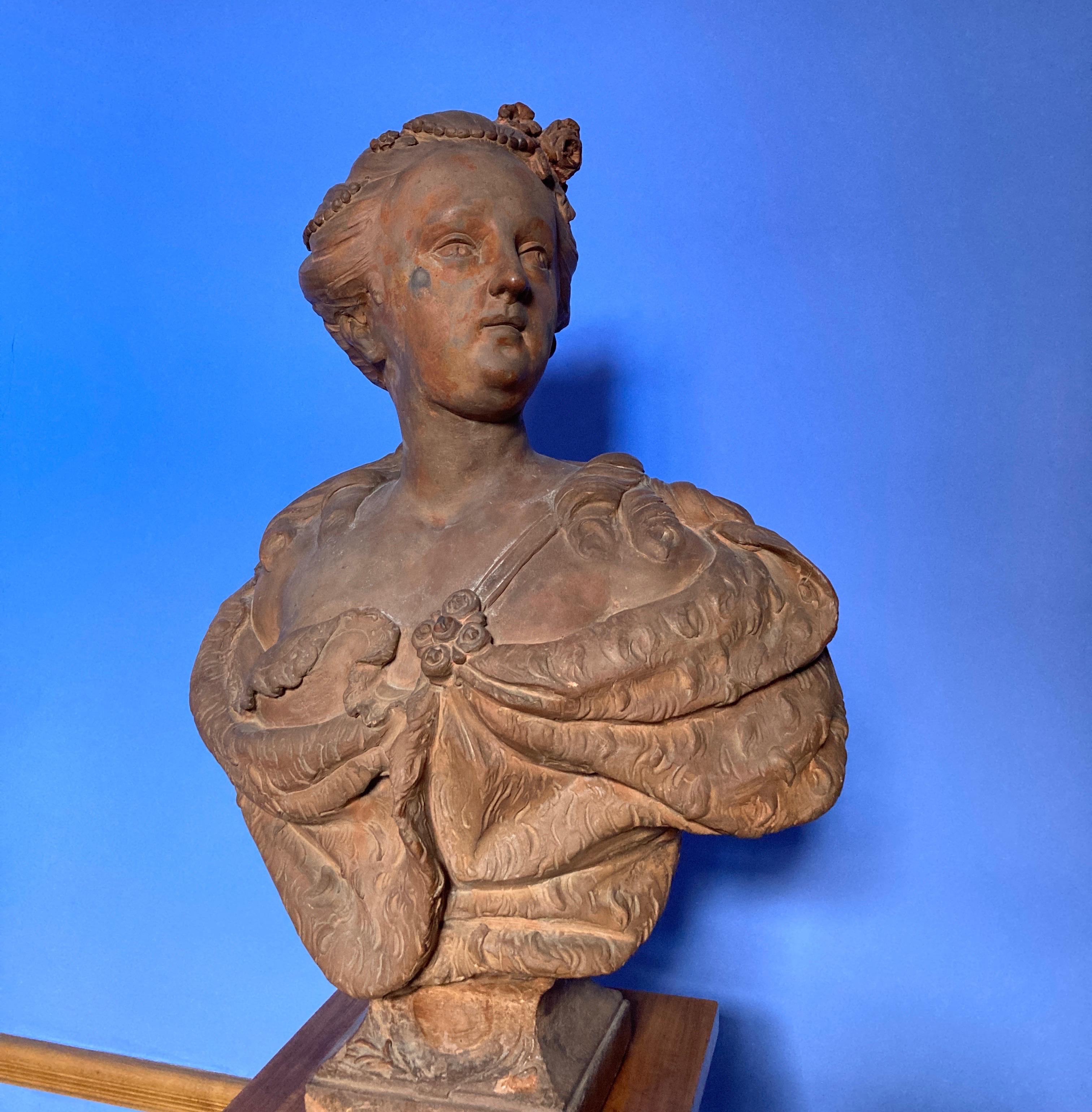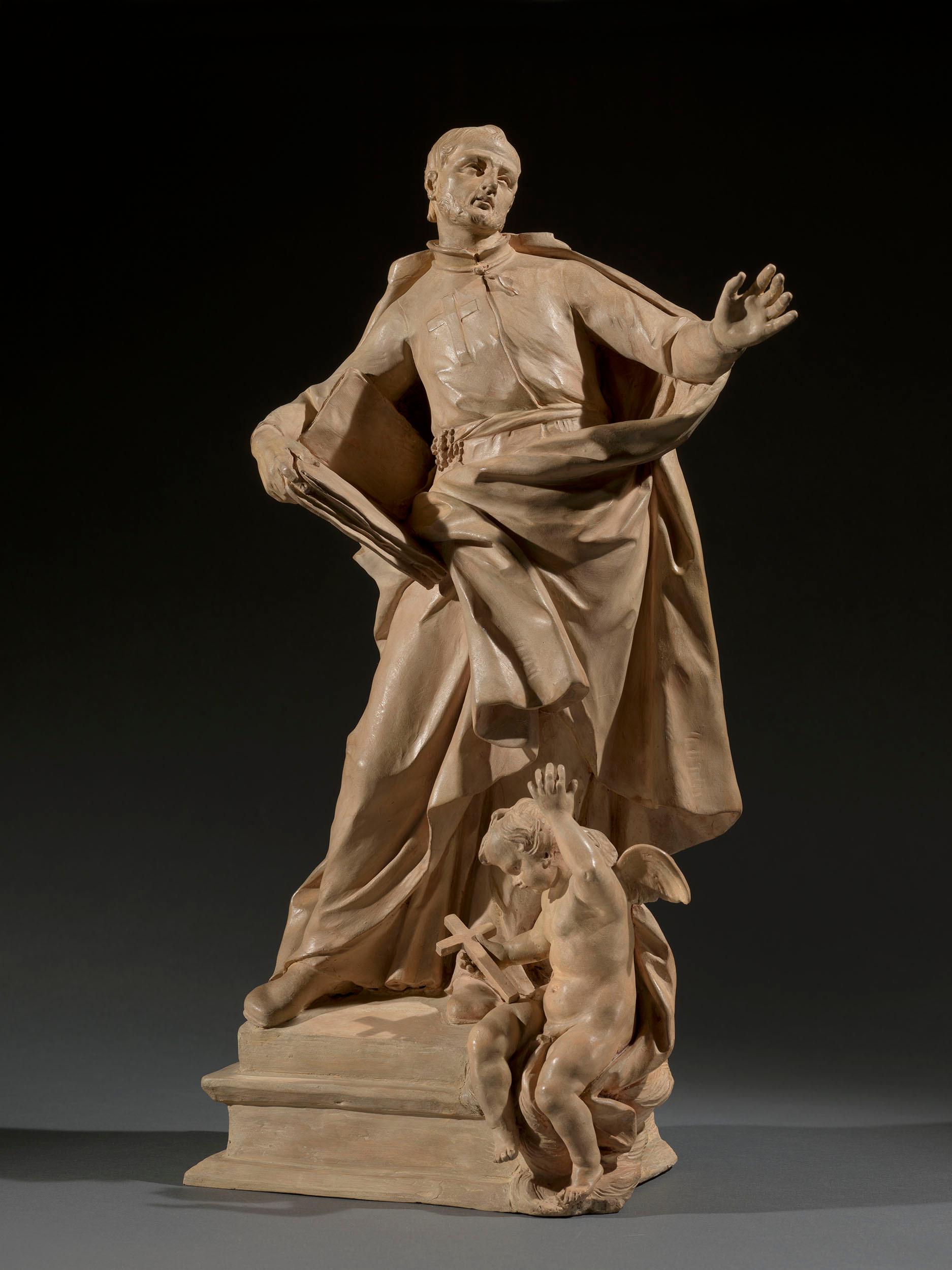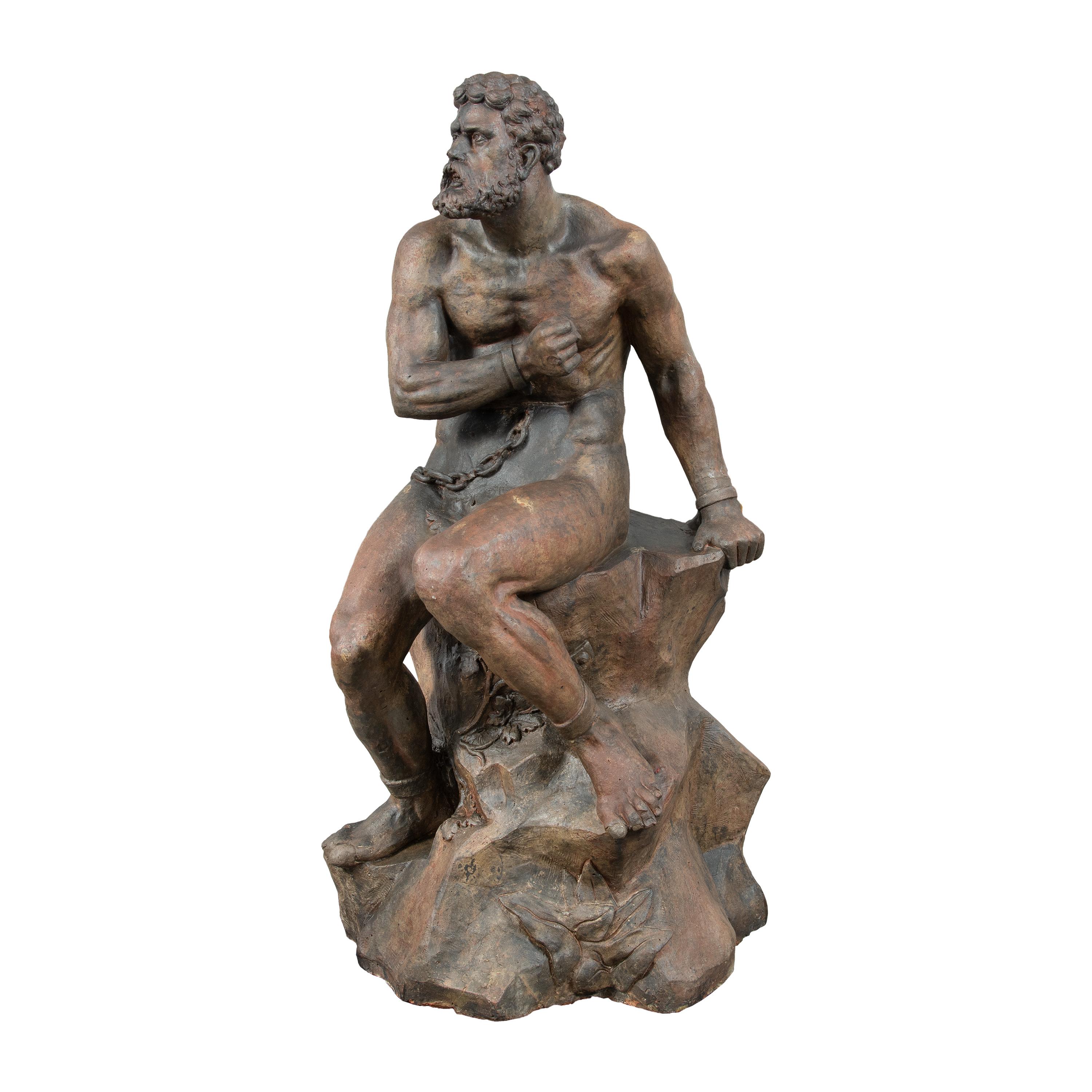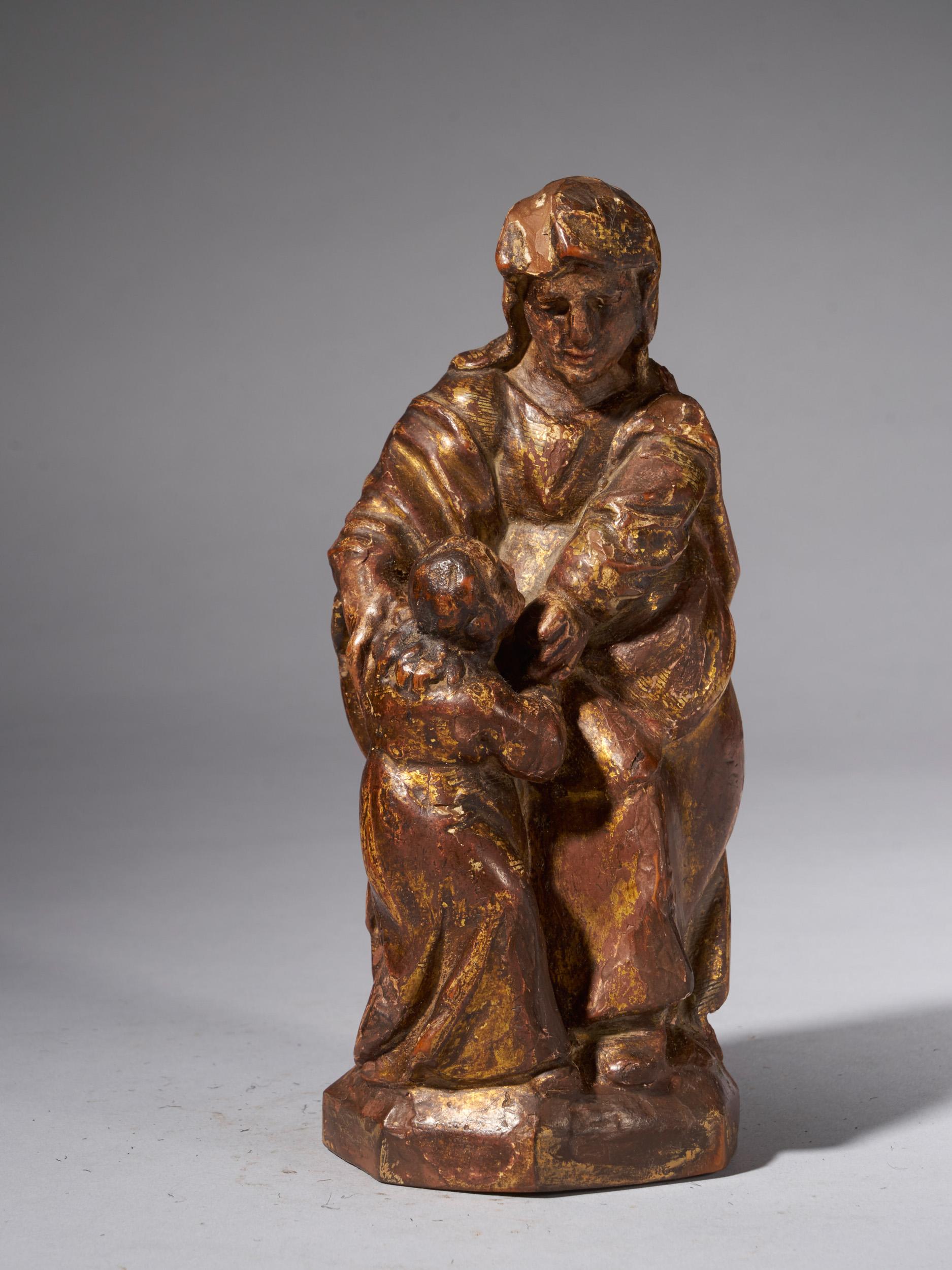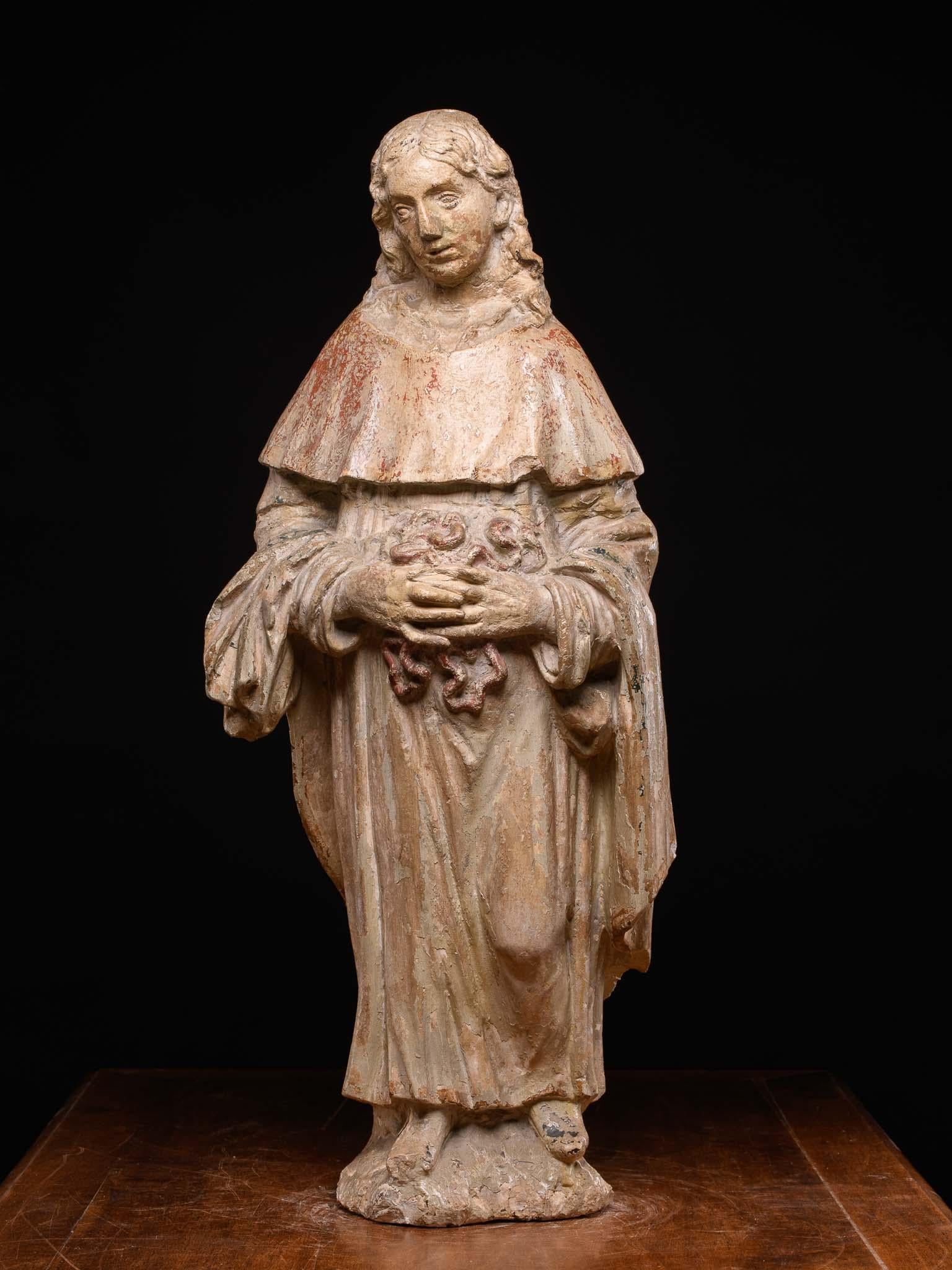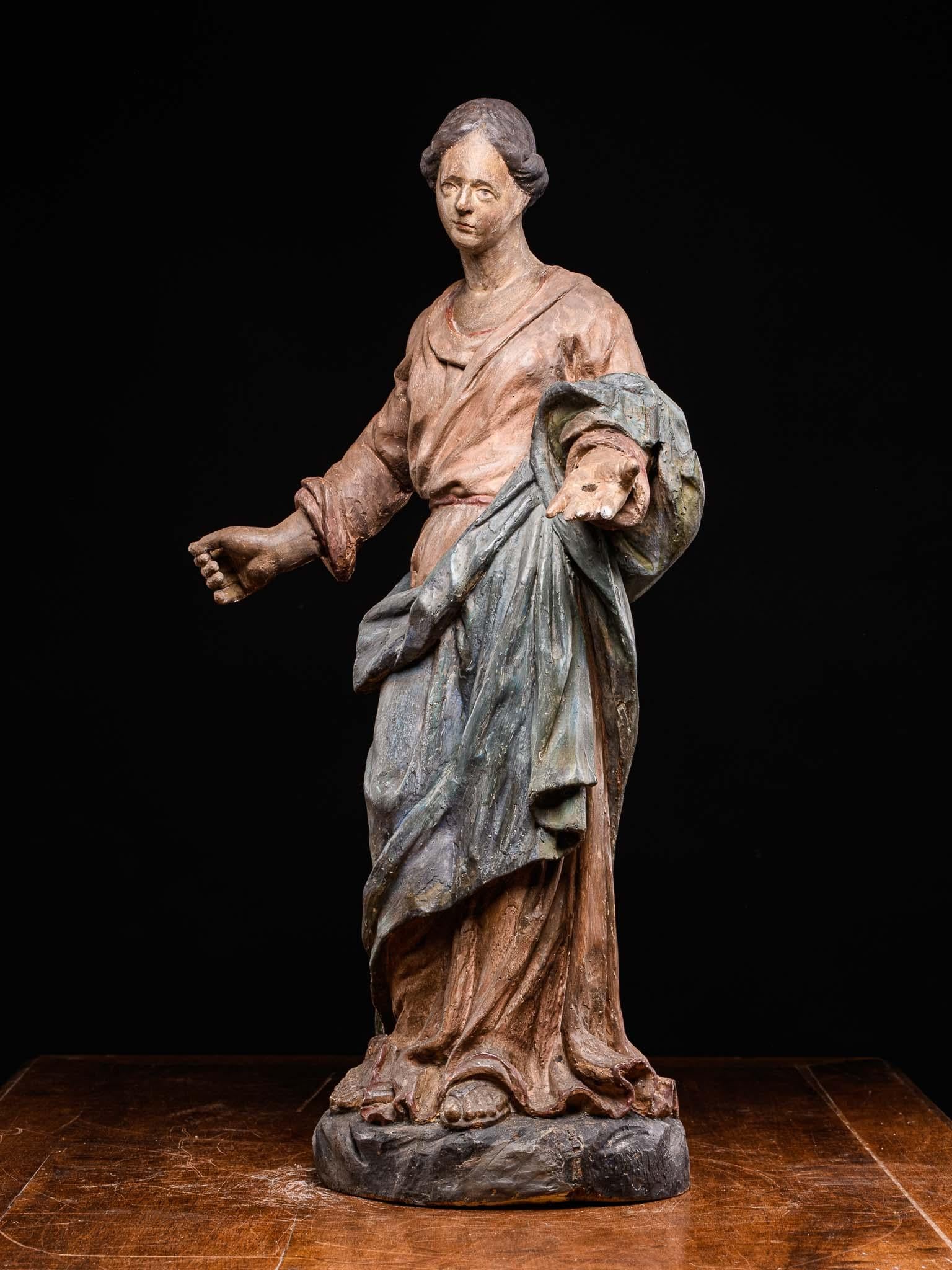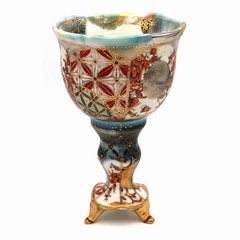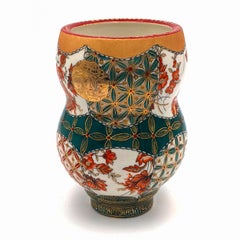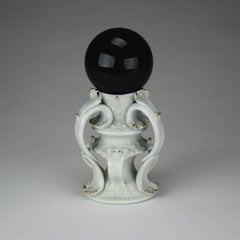
Call of the Void Orbuculum
View Similar Items
Want more images or videos?
Request additional images or videos from the seller
1 of 4
Michael StumbrasCall of the Void Orbuculum2017
2017
About the Item
- Creator:Michael Stumbras (American)
- Creation Year:2017
- Dimensions:Height: 8 in (20.32 cm)Width: 4 in (10.16 cm)Depth: 4 in (10.16 cm)
- Medium:
- Movement & Style:
- Period:
- Condition:
- Gallery Location:Kansas City, MO
- Reference Number:Seller: MST_1710_1091stDibs: LU60832183733
About the Seller
5.0
Platinum Seller
These expertly vetted sellers are 1stDibs' most experienced sellers and are rated highest by our customers.
Established in 2016
1stDibs seller since 2017
948 sales on 1stDibs
More From This SellerView All
- Just A Little Tipsy (MADE TO ORDER) (Sabbath, Kiddush, Unique, Gold Luster)By Melanie ShermanLocated in Kansas City, MO(MADE TO ORDER) (Sabbath, Kiddush, Unique, Gold Luster) *Lead Time may vary between 1-3 weeks Melanie Sherman "Just A Little Tipsy" Year: 2021 Porcelain, Glaze, ChinaPaint, 24k Germ...Category
Late 17th Century Baroque Sculptures
MaterialsLuster, Porcelain, Glaze
- Yunomi (MADE TO ORDER) (Sabbath, Kiddush, Ceremonial Vessel)By Melanie ShermanLocated in Kansas City, MO(MADE TO ORDER) (Sabbath, Kiddush, Ceremonial Vessel) *Lead Time may vary between 1-3 weeks Melanie Sherman "Yunomi" Year: 2021 Porcelain, Glaze, ChinaPaint, 24k German Gold Luster,...Category
2010s Baroque Sculptures
MaterialsLuster, Porcelain, Glaze
$398 Sale Price33% Off - Small Vase (MADE TO ORDER) (Hand-painted, hand-made, porcelain)By Melanie ShermanLocated in Kansas City, MO(MADE TO ORDER) (Hand-painted, hand-made, porcelain) *Lead Time may vary between 1-3 weeks Melanie Sherman "Small Vase" Year: 2021 Porcelain, Glaze, China...Category
2010s Baroque Sculptures
MaterialsLuster, Porcelain, Glaze
$590 Sale Price41% Off - Vintage Peacock I (Wall Piece/Dish) (MADE TO ORDER) (~50% OFF LIMITED TIME ONLY)By Melanie ShermanLocated in Kansas City, MO(MADE TO ORDER) (Hand-painted, hand-made, porcelain) *Lead Time may vary between 1-3 weeks Melanie Sherman Vintage Peacock I (Wall Piece/Dish (handpainted) Porcelain, Glaze, Overglaze, Chinapaints, 24k German Gold Luster, Brass Wire (for hanging, can be removed) Year: 2022 Size: 4.5x6x0.5in Signed by hand COA provided Ref.: 924802-1330 ------------------------ My ceramics are handmade and painted with the finest overglazes from Europe. The gold luster used is 24k liquid Gold from Germany. Every piece is unique. My imagery is inspired by vintage Meissen dinnerware...Category
2010s Baroque Sculptures
MaterialsBrass
- Vintage Peacock III (Wall Piece/Dish (hand-painted, made to order by the artist)By Melanie ShermanLocated in Kansas City, MOMelanie Sherman Vintage Peacock III (Wall Piece/Dish (handpainted) Porcelain, Glaze, Overglaze, Chinapaints, 24k German Gold Luster, Brass Wire (for hanging, can be removed) Year: 20...Category
1790s Baroque Sculptures
MaterialsBrass
- Urn of AbandonmentBy Michael StumbrasLocated in Kansas City, MO"Title : Urn of Abandonment Materials : Cone 10 Soda Fired Porcelain Date : 2017 Dimensions : 20.5”x7.5”x6.5” Description : A tall funerary urn, with a crazed celadon glaze, and a "v...Category
2010s Contemporary More Art
MaterialsPorcelain
Price Upon Request
You May Also Like
- Bust of a Lady, prob Queen Elisabeth Petrowna, Terracotta Sculpture, Baroque ArtLocated in Greven, DEBust of a Lady, thought to be Elisabeth Petrowna, also known as Elisabeth of Russia Depicted before she was crowned Terracotta Bust Elizabeth Petrovna (Russian: Елизаве́та (29 Decem...Category
18th Century Baroque Figurative Sculptures
MaterialsTerracotta
- Roman 18th century terracotta model for the sculpture of San Camillo de LellisLocated in London, GBThis remarkably fluid terracotta bozetto was made in preparation for Pietro Pacilli’s most important public commission, a large-scale marble statue of San Camillo de Lellis for the nave of St Peter’s Basilica in Rome. Expressively modelled, this terracotta sculpture is a rare and significant work made by a major Roman sculptor at a transformative moment of European sculpture. Pacilli began his working life on the great Baroque decorative projects initiated in the seventeenth century, but he found success as a restorer of ancient sculpture working to finish antiquities for a tourist market, becoming an important figure in the emergence of an archaeologically minded Neoclassicism. Pacilli trained Vincenzo Pacetti and provided important decorative work for the Museo Pio-Clementino, at the same time he is recorded restoring some of the most celebrated antiquities excavated and exported during the period. Pacilli was born into a family of Roman craftsmen, his father Carlo was a wood carver, and Pacilli is recorded working with him on the Corsini Chapel in San Giovanni Laternao as early as 1735. In 1738 his terracotta model of Joseph and Potiphar’s Wife won the first prize in the second class of the sculpture concorso at the Accademia di San Luca, this is particularly notable as Bartolomeo Cavaceppi came third. He worked as a carver and stuccoist completing works for the churches of San Marco and SS. Trinita dei Domeniciani Spagnoli. Pacilli operated as a sculptor and restorer of antiquities from his studio at the top of the Spanish Steps, close to Santa Trinita dei Monti, where he is listed as a potential vendor to the Museo Pio-Clementino in 1770. In 1763 Pacilli completed a silver figure of San Venanzio for the treasury of San Venanzio. He is recorded as Pacetti’s first master and it was evidently through Pacilli that he began to acquire his facility as a restorer of ancient sculpture. Pacilli, at his studio ‘poco prima dell’Arco della Regina alla Trinita dei Monti,’ exercised, what the nineteenth-century scholar, Adolf Michaelis called ‘rejuvenating arts’ on several important pieces of classical sculpture, including in 1760 the group of a Satyr with a Flute for the natural brother of George III, General Wallmoden, Hanovarian minister at Vienna. In 1765, Dallaway and Michaelis record that Pacilli was responsible for the restorations, including the addition of a new head, to the Barberini Venus which he had acquired from Gavin Hamilton. The Venus was then sold to Thomas Jenkins, who in turn passed it on to William Weddell at Newby Hall. In 1767 Pacilli exported a series of ancient busts ‘al naturale’ including portraits of Antinous, Julius Ceaser and Marus Aurelius, also a statue of a Muse and a Venus. As early as 1756 Pacilli seems to have been operating as an antiquarian, helping to disperse the collection of the Villa Borrioni. Pacilli supplied sculpture to notable British collectors, including Charles Townley, who on his first trip to Italy purchased the Palazzo Giustiniani statue of Hecate from Pacilli. Pacilli was involved with the Museo Pio Clementino from its conception, supplying busts of Julius Ceaser and a Roman Woman as well as completing stucco putti surmounting the arms of Pope Bendedict XIV to signal the entrance to the new Museo Critiano. In 1750 Il Diario Ordinario del Chracas announced that Pacilli had begun work on a sculpture of San Camillo de Lellis for St Peter’s. Camillo de Lellis founded his congregation, the Camillians, with their distinctive red felt crosses stitched on black habits in 1591. Having served as a soldier in the Venetian army, Camillo de Lellis became a novitiate of the Capuchin friars, he moved to Rome and established a religious community for the purpose of caring for the sick. In 1586 Pope Sixtus V formerly recognised the Camillians and assigned them to the Church of Santa Maria Maddalena in Rome. Camillo de Lellis died in 1614 and was entombed at Santa Maria Maddalena, he was canonised by Benedict XIV on June 26, 1746. It was an occasion that prompted the Camillians to make a number of significant artistic commissions, including two canvases by Pierre Subleyras showing episodes from San Camillo’s life which they presented to Benedict XIV. In 1750 Pacilli was commissioned to fill one of the large niches on the north wall of the nave with a sculpture of San Camillo. The present terracotta bozetto presumably had two important functions, to enable Pacilli to work out his ideas for the finished sculpture and at the same time to show his design to the various commissioning bodies. In this case it would have been Cardinal Alessandro Albani and Monsignor Giovan Francesco Olivieri, the ‘economo’ or treasurer of the fabric of St Peter’s. Previously unrecorded, this terracotta relates to a smaller, less finished model which has recently been identified as being Pacilli’s first idea for his statue of San Camillo. Preserved in Palazzo Venezia, in Rome, the terracotta shows San Camillo with his left hand clutching his vestments to his breast; the pose and action more deliberate and contained than the finished sculpture. In producing the present terracotta Pacilli has expanded and energised the figure. San Camillo is shown with his left hand extended, his head turned to the right, apparently in an attempt to look east down the nave of St Peter’s. The model shows Pacilli experimenting with San Camillo’s costume; prominently on his breast is the red cross of his order, whilst a sense of animation is injected into the figure through the billowing cloak which is pulled across the saint’s projecting right leg. The power of the restrained, axial contrapposto of bent right leg and outstretched left arm, is diminished in the final sculpture where a baroque fussiness is introduced to the drapery. What Pacilli’s terracotta demonstrates, is that he conceived the figure of San Camillo very much in line with the immediate tradition of depicting single figures in St Peter’s; the rhetorical gesture of dynamic saint, arm outstretched, book in hand, head pointed upwards was perhaps borrowed from Camillo Rusconi’s 1733 sculpture of St. Ignatius...Category
18th Century Baroque Figurative Sculptures
MaterialsTerracotta
- Baroque master sculptor - 18th century terracotta sculpture - Prometheus figureLocated in Varmo, ITTerracotta sculpture - Prometheus - Italy, 18th century. 48 x 50 cm x h 94 cm. Entirely in terracotta. - All shipments are free and professionally packed. - This item is sold wit...Category
Early 18th Century Baroque Figurative Sculptures
MaterialsTerracotta
$5,208 Sale Price20% Off - 18th C, Religious, Spanish School, Partly Gilded Wooden Sculpture of MariaLocated in brussel, BEThe gospel of St. Luke tells how Mary and Joseph took Jesus with them on their annual pilgrimage to Jerusalem. After seven days of celebration, Jesus’ parents returned home, but were...Category
18th Century Baroque Figurative Sculptures
MaterialsCanvas, Oil
$579 Sale Price40% Off - 17th C Stone statue of Saint Erasmus or Saint ElmoLocated in brussel, BESaint Erasmus or Saint Elmo (Antioch, ca. 240 – Formia, 303) was an Italian bishop and patron saint of the sailors. His attribute was the capstan, a winch on which the anchor chains were rolled up. He died as a martyr for his faith, and his bones were transferred to Gaeta in the 9th century, where they are kept in the cathedral to this day. The electric phenomenon of Saint Elmus fire is named after Saint Erasmus and the 16th C humanist Desiderius Erasmus. Little is known with certainty about Saint Erasmus' life. However, many legends may have been passed on orally until - no older writings are known with certainty. His birthplace was in present-day Syria. However, the persecution of Christians under Emperor Diocletian forced him to flee to Mount Lebanon...Category
17th Century Baroque Figurative Sculptures
MaterialsStone
- 17th C Polychromed fruitwood carved statue depicting Madonna, France.Located in brussel, BEAn exceptionally beautiful antique French wood carving, made in the 17th century. It depicts Madonna standing with open offering arms .The...Category
17th Century Baroque Figurative Sculptures
MaterialsWood
$2,473 Sale Price40% Off
